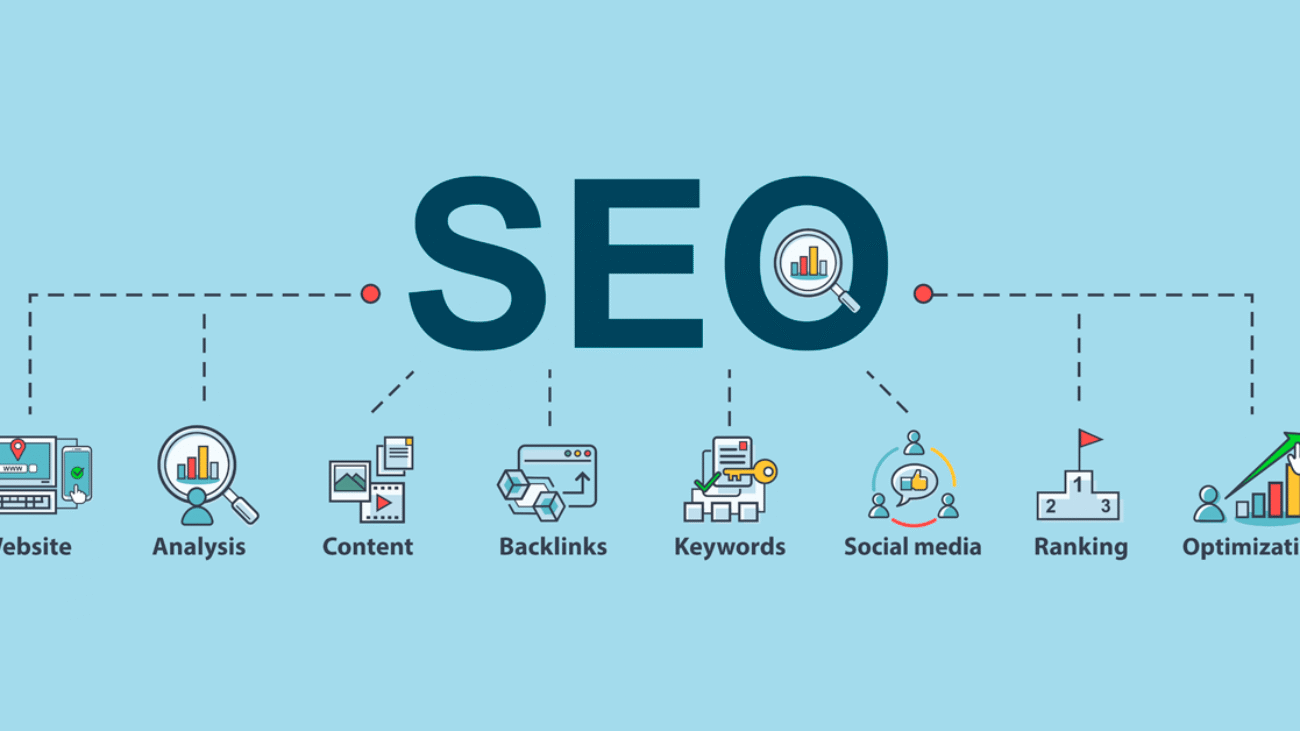In the evolving digital marketing landscape, the right SEO tools comparison can make or break your strategy. Whether you’re managing a blog, optimizing a client site, or running a large-scale e-commerce platform, choosing between Ahrefs, SEMrush, and Moz is a critical decision.
These three tools dominate the SEO landscape for a reason: they offer comprehensive features for keyword research, backlink analysis, technical SEO audits, and more. But how do you decide which one best suits your needs?
In this in-depth comparison, we’ll break down the strengths, weaknesses, use cases, pricing, and performance of Ahrefs vs. SEMrush vs. Moz to help you make a smart, strategic decision.
Table of Contents
- Overview of the Tools
- Keyword Research Capabilities
- Backlink Analysis
- Site Audits and Technical SEO
- Rank Tracking and SERP Features
- .Competitor Analysis
- UI/UX and Ease of Use
- Reporting and Integrations
- Pricing and Plans
- Final Verdict and Use Case Scenarios
1. Overview of the Tools
Ahrefs:
Ahrefs is known for its massive backlink index and competitive intelligence. Its clean interface and data accuracy make it a favorite among SEO professionals.
Notable Features:
-
Site Explorer
-
Content Explorer
-
Keywords Explorer
-
Rank Tracker
-
Site Audit
SEMrush:
SEMrush is an all-in-one digital marketing suite offering tools beyond SEO, including PPC, social media, and content marketing analytics.
Notable Features:
-
Keyword Magic Tool
-
Domain Overview
-
SEO Content Template
-
Position Tracking
-
Technical Site Audit
Moz:
Moz has long been an industry standard, especially among beginners. It focuses heavily on ease of use, educational content, and local SEO.
Notable Features:
-
Keyword Explorer
-
Link Explorer
-
MozBar (browser extension)
-
Rank Tracker
-
On-Page Grader
2. Keyword Research Capabilities
Ahrefs:
Ahrefs provides in-depth keyword metrics, including Keyword Difficulty (KD), Clicks, and Parent Topic. Its global database supports keyword research in over 170 countries.
Strengths:
-
KD is reliable and updated frequently
-
“Questions” filter for targeting informational content
-
Great for topic clustering and content gap analysis
SEMrush:
SEMrush’s Keyword Magic Tool is highly intuitive, offering keyword variations, intent filters, and SERP feature targeting.
Strengths:
-
Real-time volume and intent segmentation
-
Keyword grouping by topic
-
“Keyword Manager” for saved lists
Moz:
Moz’s Keyword Explorer focuses on Priority Score, which factors in CTR and search volume. However, its keyword database isn’t as large as Ahrefs or SEMrush.
Strengths:
-
Clear, beginner-friendly UI
-
Useful for quick keyword snapshot
-
Good for local keyword research
3. Backlink Analysis
Ahrefs:
This is where Ahrefs truly shines. With one of the largest and freshest backlink databases, it’s a go-to for link-building strategies.
Key Features:
-
Live backlink data
-
Referring domains analysis
-
Anchor text breakdown
-
Lost & broken backlinks tracking
SEMrush:
SEMrush offers detailed backlink audit tools with toxic link detection and integration with Google Search Console.
Key Features:
-
Link toxicity score
-
Competitor link overlap
-
Historical backlink tracking
Moz:
Moz’s Link Explorer includes metrics like Domain Authority (DA) and Spam Score, but its backlink index updates less frequently than its competitors.
Key Features:
-
Easy-to-read visualizations
-
Great for identifying high-authority domains
-
Integrated spam detection
4. Site Audits and Technical SEO
Ahrefs:
Ahrefs’ Site Audit tool is fast, visual, and focused on on-page and technical issues like duplicate content, crawl errors, and Core Web Vitals.
Pros:
-
Health Score metric
-
Internal linking suggestions
-
Mobile optimization reports
SEMrush:
SEMrush offers arguably the most advanced site audit features with over 140 technical checks, plus actionable tips to resolve issues.
Pros:
-
Prioritized issue list
-
JavaScript rendering analysis
-
Integration with Google tools
Moz:
Moz provides a solid, entry-level site audit tool perfect for small websites and local businesses.
Pros:
-
Simple recommendations
-
Weekly crawl schedule
-
Spam detection
5. Rank Tracking and SERP Features
Ahrefs:
Provides accurate rank tracking across desktop and mobile, with automatic updates and geographic filters.
Highlights:
-
Daily/weekly tracking
-
SERP snapshot preview
-
Alerts for ranking changes
SEMrush:
SEMrush’s Position Tracking tool is robust, offering keyword tagging, device segmentation, and featured snippet tracking.
Highlights:
-
Tracks 20+ SERP features
-
Share of voice reporting
-
Geo-targeted tracking
Moz:
Moz includes rank tracking in its Pro plans, but it lacks real-time updates and extensive SERP feature analysis.
Highlights:
-
Basic rank tracking
-
Filter by engine and location
-
Good for local SEO ranking
6. Competitor Analysis
Ahrefs:
Great for discovering content gaps, backlink opportunities, and traffic share. You can even spy on your competitor’s top-performing pages.
SEMrush:
Best-in-class competitor insights across SEO, PPC, and content. Offers Traffic Analytics and Market Explorer tools.
Moz:
Provides basic competitor analysis, including DA comparison and keyword overlap.
7. UI/UX and Ease of Use
-
Ahrefs: Clean, fast, and data-dense. Great for power users.
-
SEMrush: Feature-packed dashboard with a learning curve. Best for agencies and marketing teams.
-
Moz: Intuitive and beginner-friendly, but feels slightly outdated.
8. Reporting and Integrations
Ahrefs:
-
Offers scheduled email reports
-
No direct Google Data Studio or GSC integration
SEMrush:
-
Best reporting suite among all three
-
Integrates with GDS, GA4, GSC, and other tools
-
White-label reporting for agencies
Moz:
-
Decent export and share options
-
Lacks advanced integrations
9. Pricing and Plans (as of 2025)
| Tool | Basic Plan | Best For |
|---|---|---|
| Ahrefs | $99/month | Freelancers & SEO pros |
| SEMrush | $129.95/month | Agencies & marketing teams |
| Moz | $99/month | Beginners & local businesses |
Free Trials:
-
Ahrefs: Limited tools with 7-day trial ($7)
-
SEMrush: Full access 7-day free trial
-
Moz: 30-day free trial
Final Verdict: Which Should You Choose?
Pick Ahrefs If…
✔ You need deep backlink analysis
✔ You focus on content & link-building
✔ Budget isn’t a concern
Pick SEMrush If…
✔ You want an all-in-one SEO suite
✔ You need advanced keyword tracking
✔ You run PPC campaigns (it includes ads tools)
Pick Moz If…
✔ You’re a beginner
✔ You focus on local SEO
✔ You want a simpler interface
Future-Proofing Your SEO Strategy with the Right Tool
As Google’s algorithm continues to evolve with increasing emphasis on E-E-A-T, user intent, and technical performance, selecting the right SEO tools comparison is more crucial than ever. Your choice should not only support your current SEO tasks but also enable scalability and adaptability in a constantly changing digital environment.
All three tools Ahrefs, SEMrush, and Moz are continually improving their feature sets to align with SEO trends in AI-driven search, voice optimization, mobile-first indexing, and Core Web Vitals.
If you’re planning to scale up content production, Ahrefs’ Content Explorer and backlink analysis can help you discover untapped opportunities. For teams working across SEO, PPC, and content, SEMrush’s cross-functional dashboard provides unmatched workflow efficiency. For startups and local businesses, Moz’s educational content and user-friendly platform serve as a perfect entry point.
Ultimately, the best SEO tool is one that matches your skill level, integrates into your workflow, and empowers you to make data-driven decisions. Investing in a robust SEO platform now ensures your strategy remains effective, competitive, and aligned with search engine advancements for years to come.
Final Thoughts
Ahrefs, SEMrush, and Moz all serve unique purposes within the SEO ecosystem. The best choice depends on your specific goals, team size, and budget. Instead of asking which tool is better overall, ask: “Which tool aligns best with my SEO strategy?”
If you’re just starting out, Moz is your friend. If you’re scaling SEO and PPC efforts, SEMrush delivers unbeatable value. For backlink builders and content marketers, Ahrefs is the clear champion.
Invest in the right tool, and you’ll not only gain insights you’ll build a strategic advantage in an increasingly competitive digital world.


